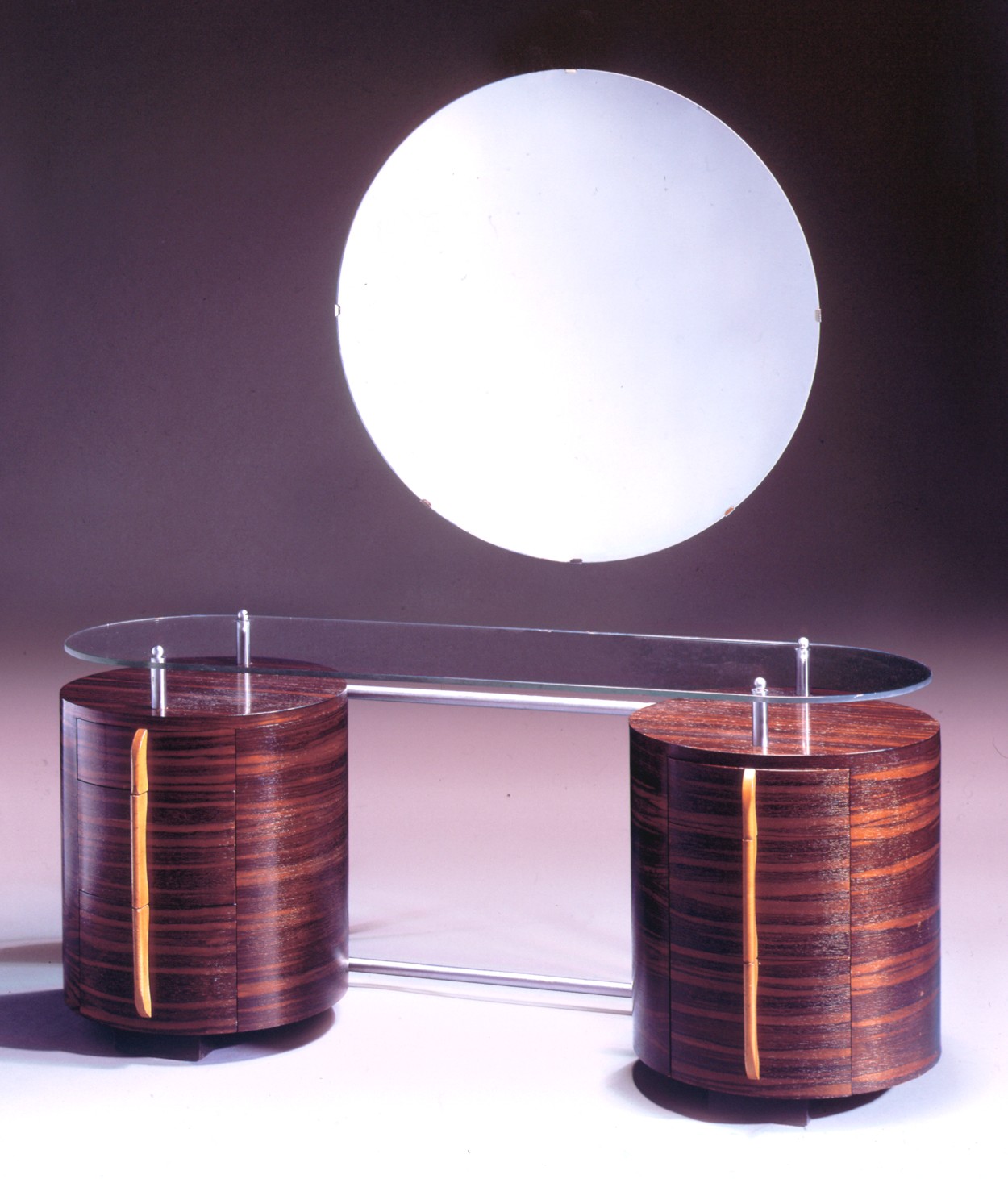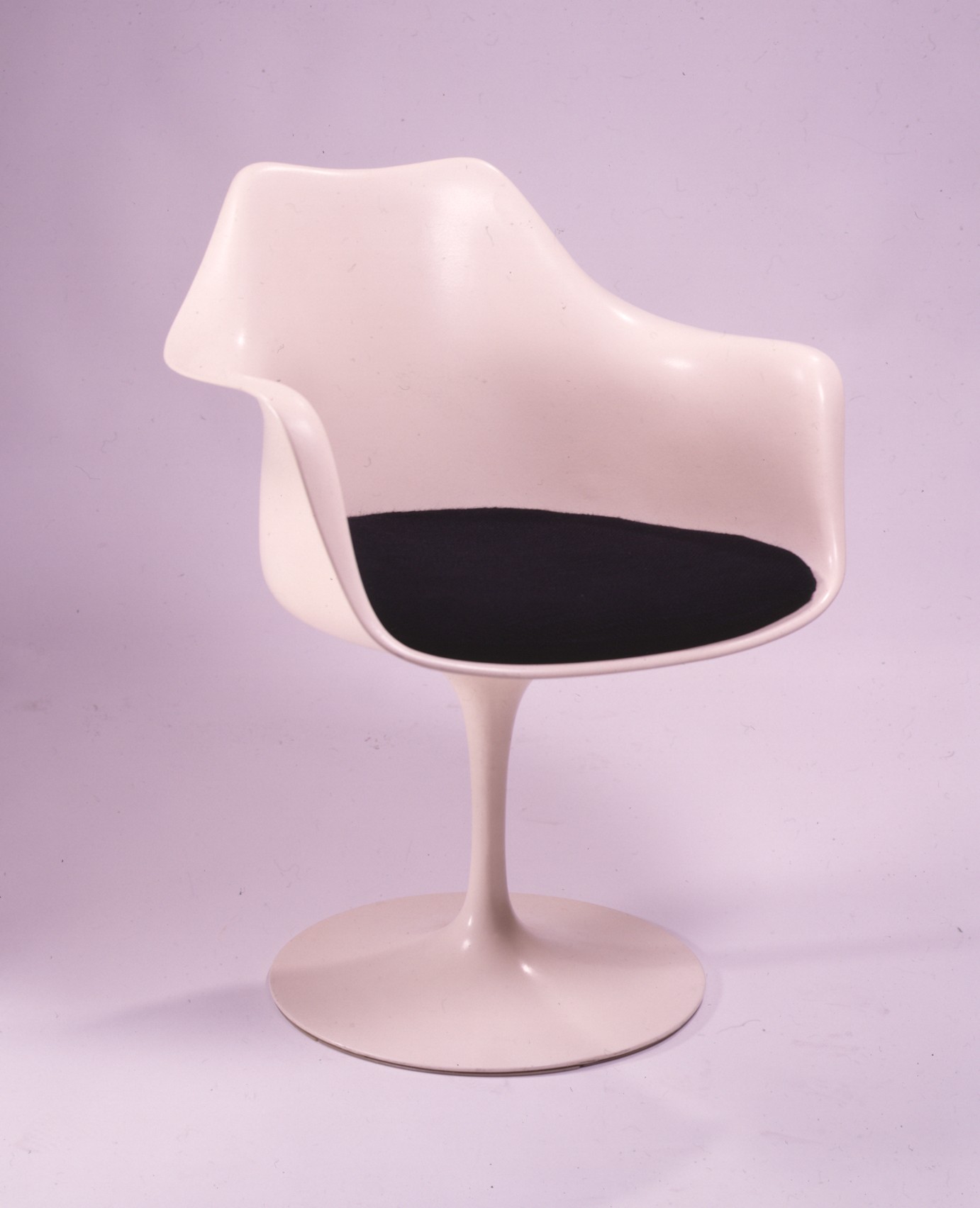As much as I like The Art of Seating, a show of 200 years of chairs at the Columbia Museum of Art, I was more excited to see what the museum would do with the companion design exhibition. For Design from the Collection, members of the museum affiliate group the Columbia Design League mined the museum collection for examples of good design. I feel a close connection to many of the objects in the exhibition, having had an opportunity to see many quite a few times and to remember when the museum acquired some.
When we think about museums, great paintings and sculptures first come to mind. The works in Design from the Collection are more prosaic – chairs, desks, teapots, dishes – but their functional origins and often humble material coupled with thoughtful and beautiful design provide a model for the possibilities of beauty in our daily life.
One piece I’m always happy to revisit is Danish designer Georg Jensen’s chocolate pot from 1930. The silver pot is seven-inches high with sleek lines and a low-set teak side handle and matching lid handle; the best way to describe it is charming. Another simple piece, a 1958 teapot by John Prip, is the made of stuff even more basic - pewter and plastic – which doesn’t prevent it from being a delight.
One piece I don’t recall seeing before is Gilbert Rohde’s dressing table from around 1940, but it has belonged to the museum for a decade and is certainly memorable. With its sleek, rounded lines this dressing table made of ebony veneer and quilted maple with a top of glass suspended by steel tubing looks like it could speed around one’s bedroom. It’s the perfect marriage of elegant modern design coupled with a high level of craftsmanship.
As companion to The Art of Seating, the exhibition appropriately has a lot of chairs; chairs that make you rethink chairs, really appreciate chairs, toss your stupid and ugly chairs. The earliest chair, and about the oldest work in the show, is a 1915 bent wood rocker by chair innovators Thonet. (The Austrian company’s chair No. 18 has been manufactured since 1876.) It has rockers and arms made of one continuous oval of bent wood. It is a marvelous melding of new technology, function and beauty – as are all the best pieces in the show.
Eero Saarinen is best known as the architect of the TWA terminal at JFK Airport in New York and the Dulles Airport main terminal, but he created furniture just as cool as those buildings. The exhibition contains two of his most iconic designs – the tulip chair and tulip table. (These were first manufactured in 1956, but like quite a few of the post-World War II furniture pieces these particular items were made a couple of decades later in response to a renewed appreciation of mid-century design.)
Among the other well-known designers represented in the show are Charles Eames and Ray Eames with a molded plywood chair from the 1940s, a cast aluminum and fabric chair from 1958 (along with the Rohde’s dressing table, it’s my favorite piece), a 1946 wooden slat bench by George Nelson, and a ‘40s carafe by Russell Wright. On the unknown end is Danish designer Poul Jeppesen’s modern, but warm and inviting wood and cane armchair from 1950.
Entering the exhibition through the Art of Seating, you’ll be greeted by pieces such as these. Near the end of the show you will wonder if you’ve wandered into another exhibition entirely. You’ll find works that fit firmly in the fine crafts category – glass, ceramics, basketry – as well as a few pieces that are simply sculpture. The exhibition text panels are also puzzling. Several are written with a personal point of view by committee members while others read like standard museum text although all are credited to committee member. These confusing turns may be the result of a committee-created exhibition – in this case it looks like the work of two committees that never met. Both these things badly undermine what is largely an excellent show.
On the plus side, the objects are creatively displayed – especially the chair perched atop platforms attached to the gallery walls. The exhibition is on display through July 29.
-- Jeffrey Day is a frequent contributor to Jasper and What Jasper Said, and the former senior arts writer for The State




